What Is a Business Growth Strategy?
A business growth strategy is a plan of action that enables a business to achieve its goals—usually increasing revenue, profits, and market share.
It involves identifying key opportunities. Like enhancing your product line, reaching new markets, or investing in relevant marketing channels.
Whether you're a startup or an established global brand, having a clear growth strategy is essential.
Stick around to discover actionable business growth strategies to help your brand achieve its goals.
13 Best Business Growth Strategies
Digital Advertising
Digital advertising is one of the most effective growth strategies for business. It refers to ads delivered via online channels such as search engines, social media, websites, and mobile apps.
You can run online ads to reach your target audience and encourage them to take a specific action. Like making a purchase.
Digital ads are efficient because you can target potential customers based on specific criteria. Such as:
- Age
- Interests
- Location
- Occupation
And more
Your competitors are probably already doing this. To get insight into their ads strategies, use Semrush’s Advertising Research tool.
To get started, type in the URL of your competitor’s site. Then, click “Search.”

You’ll see a list of keywords that your competitor is targeting on Google Ads. To view the ones not related to their brand, open “Advanced filters” and select “Keyword type.” Then, click “Not branded.”
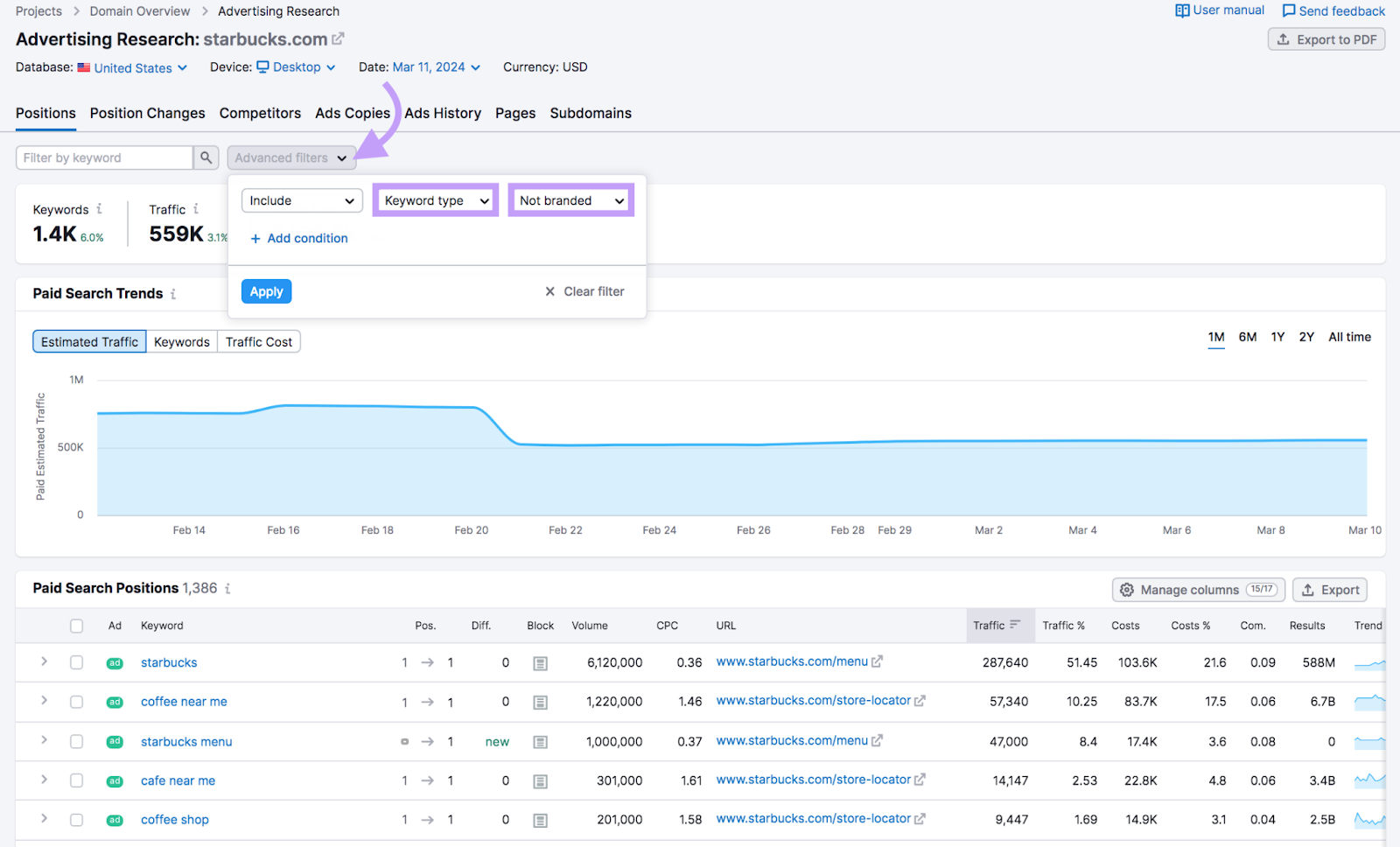
Notice how Starbucks is targeting terms like “coffee near me” and “coffee shops.”
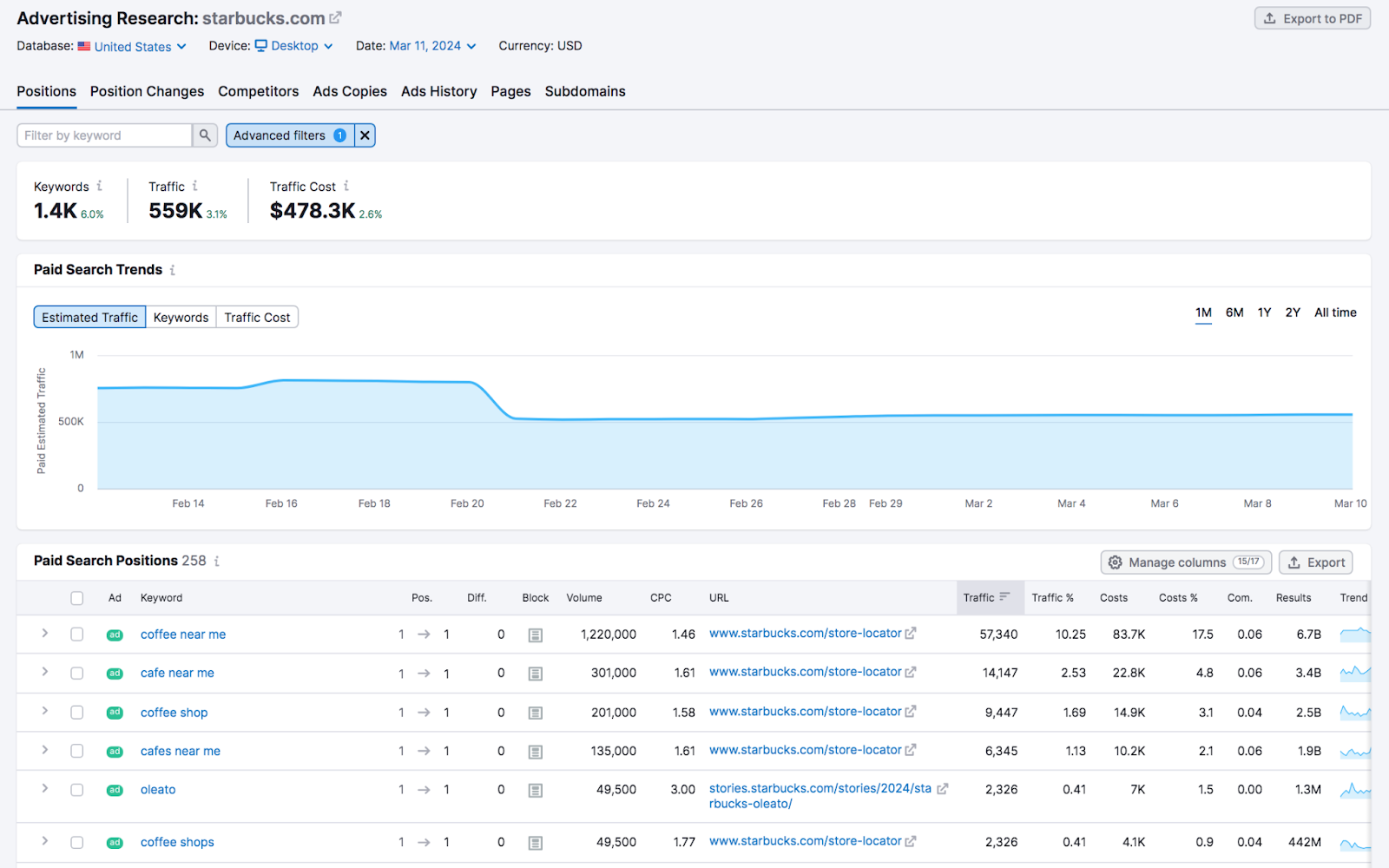
Want to see what your competitors’ ads look like? Just navigate to the “Ads Copies” tab. Here, you’ll see ads your competitors are running:
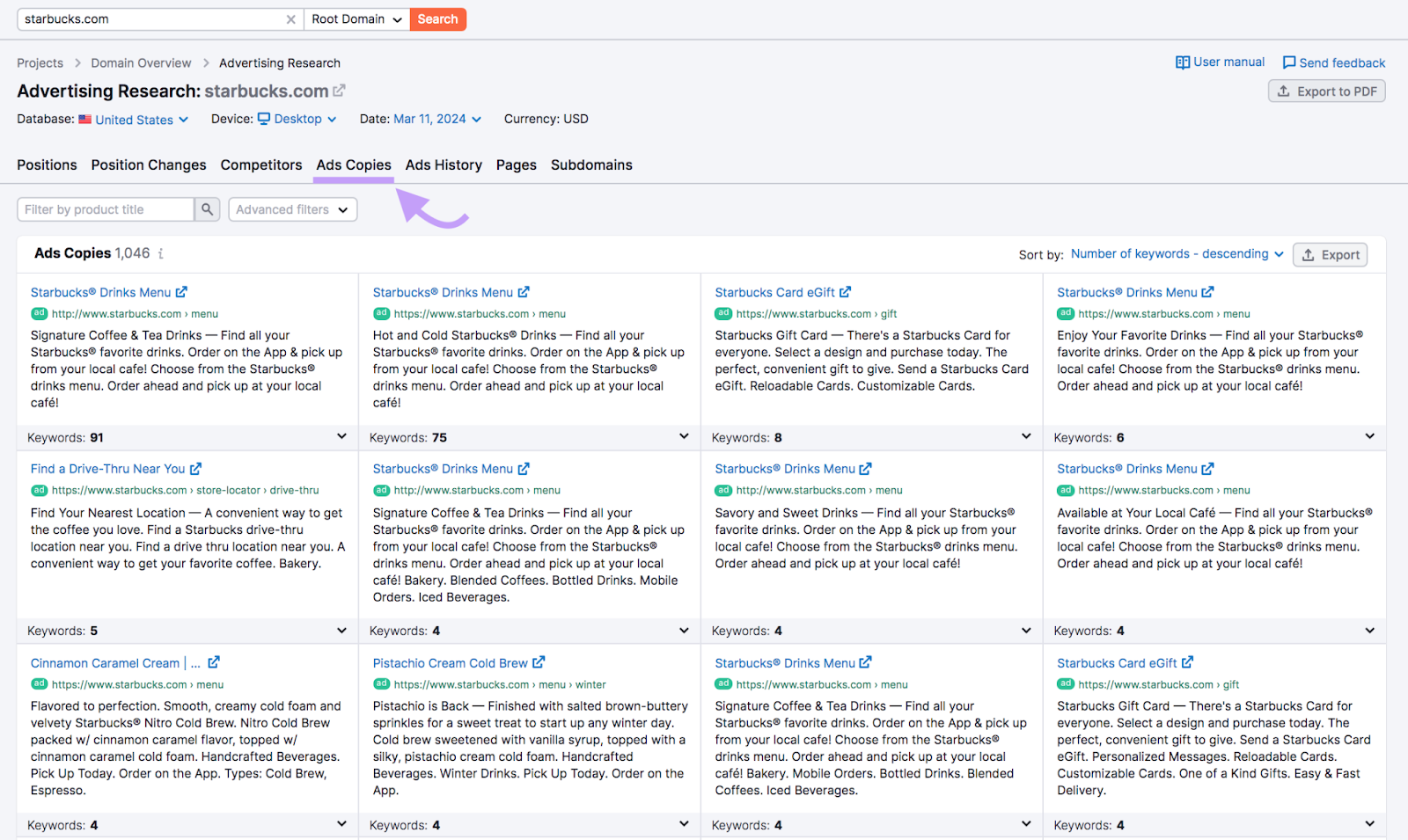
Use these insights as inspiration to create your own high-performing ads. To help your business acquire new customers, sell products, and drive growth.
Search Engine Optimization
Search engine optimization (SEO) improves a website's visibility in search engine results. Which means users are more likely to find the business when they’re looking for information about its products and services. And unlike ads, you don’t have to pay for each click.
For example, let’s say someone is searching for ski gear for their next vacation. They type in “ski jackets for women.”
Given their prominent placement at the top of search results, Snow+Rock and Decathlon are more likely to capture customer attention, as users often click on the first few results.
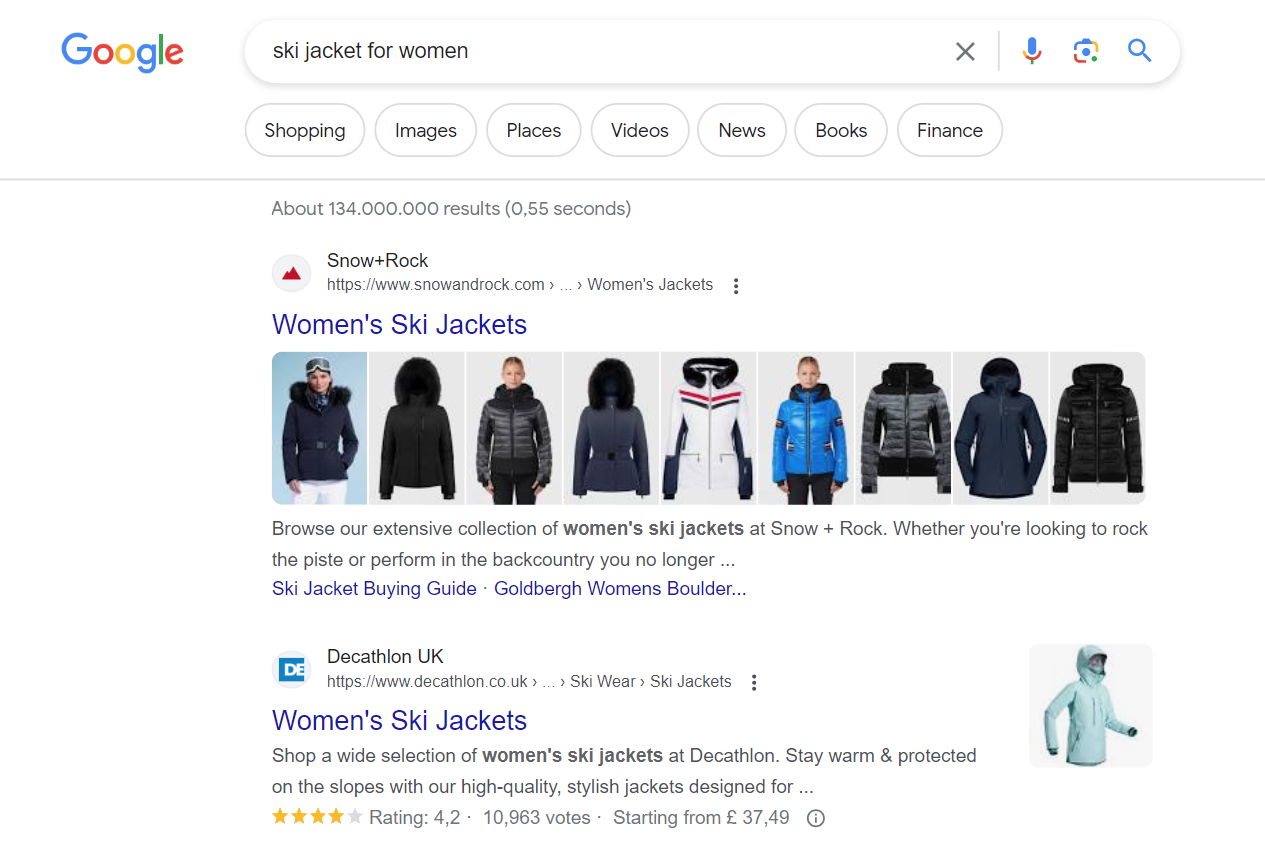
Wondering how to get to the top of Google like that?
A good place to start is with keyword research. So you can identify the terms your potential customers are searching for.
Here’s how to get started with Semrush’s Keyword Magic Tool.
Type in a word or phrase that’s relevant to your brand or product. Then, hit “Search.”

You’ll see a list of keywords, along with the search volume (how many times users search a keyword on average each month) and keyword difficulty (how hard it will be to rank for the term).
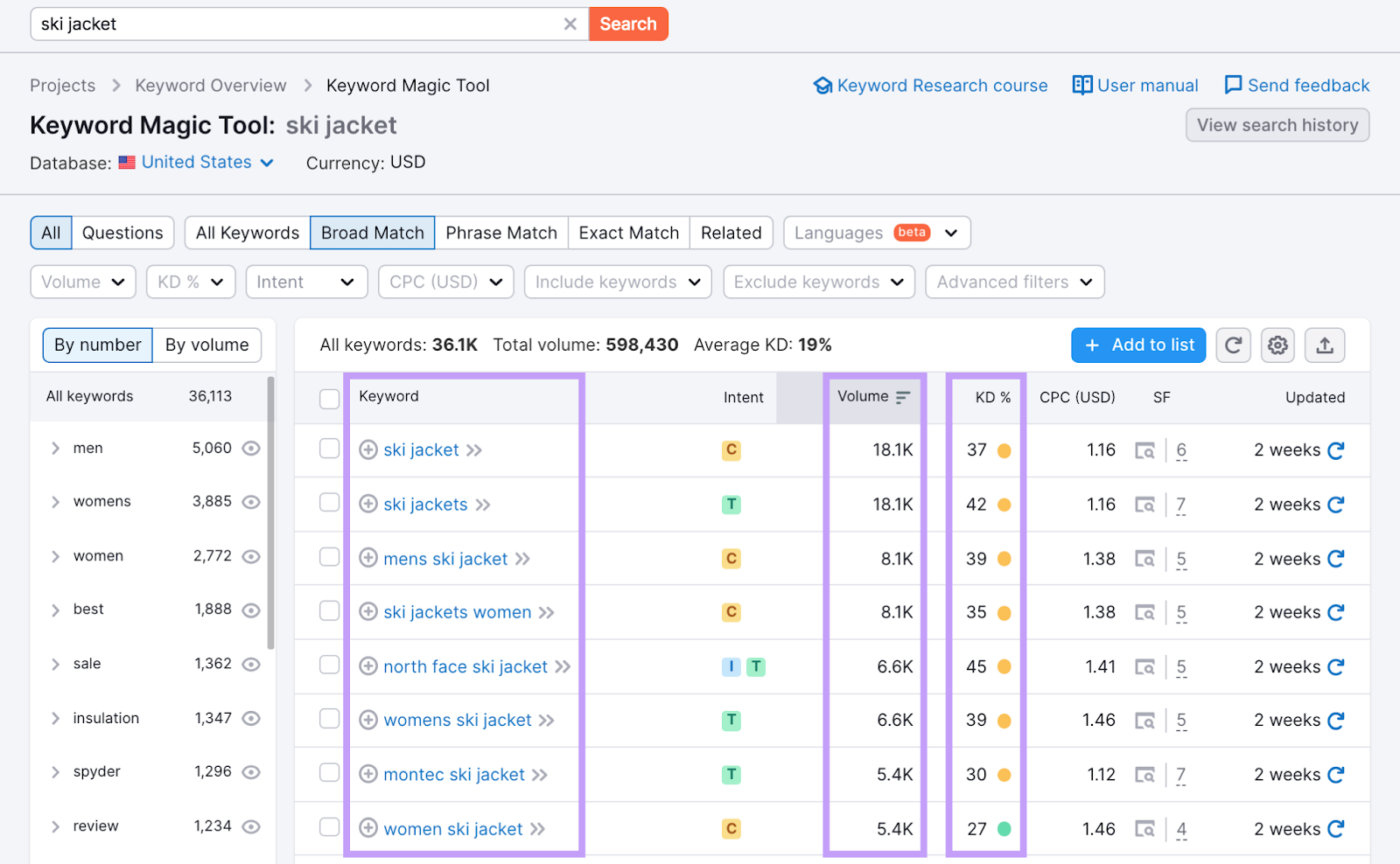
Check the keywords that seem relevant and select “+ Add to keyword list.”
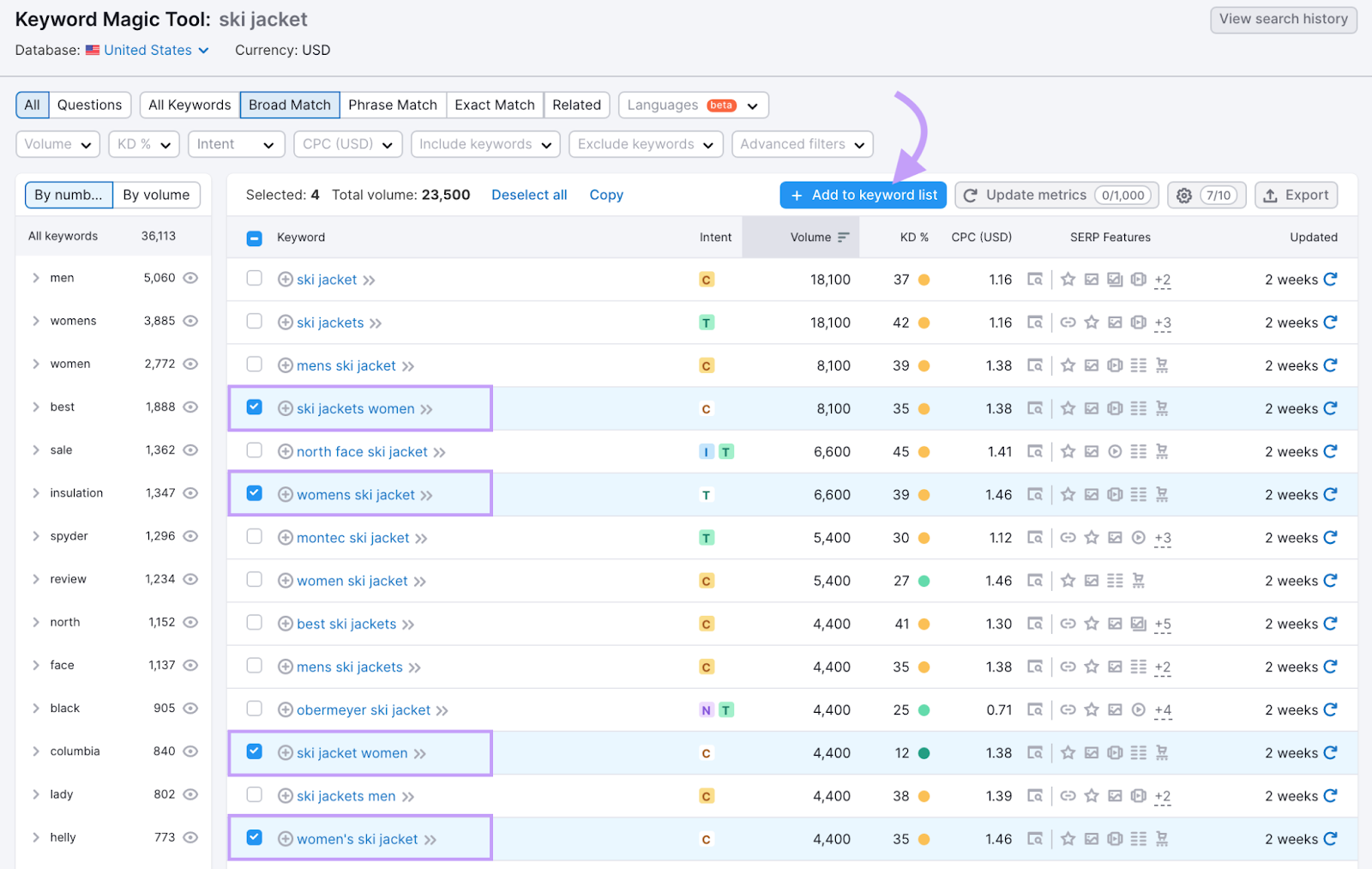
You’ll end up with a list of keywords to target. Use them to create new content about those topics—or optimize your existing content.
This can increase your site’s visibility for these terms. So users are more likely to find you.
Social Media
Social media involves using platforms like Facebook, Instagram, TikTok, and LinkedIn to talk directly to customers and share things that interest them. It helps a brand build a community and stay connected with its audience.
For example, pet food brand Blue Buffalo leverages Instagram to share tutorials, product launches, and special offers with customers. In this reel, they share advice on pet dental care and promote the brand’s new dental chews:
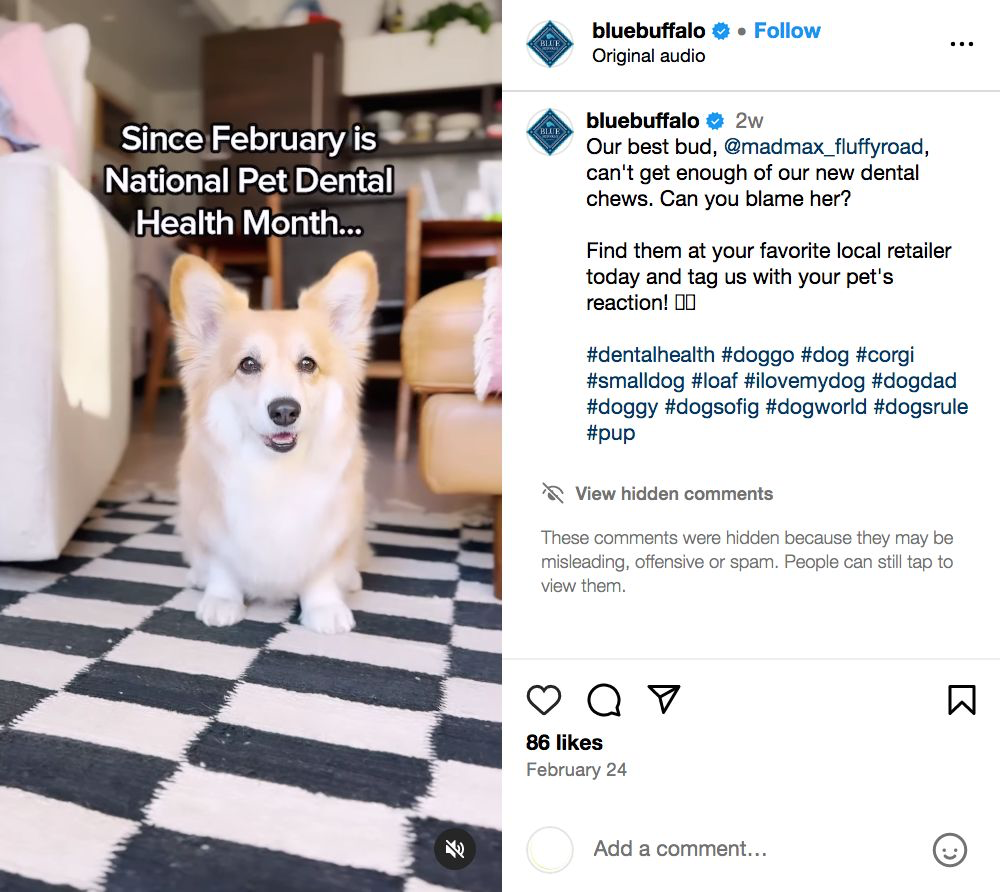
Loyalty and Referral Programs
Customer loyalty and referral programs reward individuals for their ongoing business. It’s good for customer retention. And for bringing new customers to your brand.
These programs usually offer perks such as:
- Discounts
- Exclusive offers
- Points redeemable for products or services
- Invitations to events
This makes customers feel special. And encourages them to share positive experiences with friends and family.
For example, digital bank Revolut offers customers a cash reward if they refer their friends.
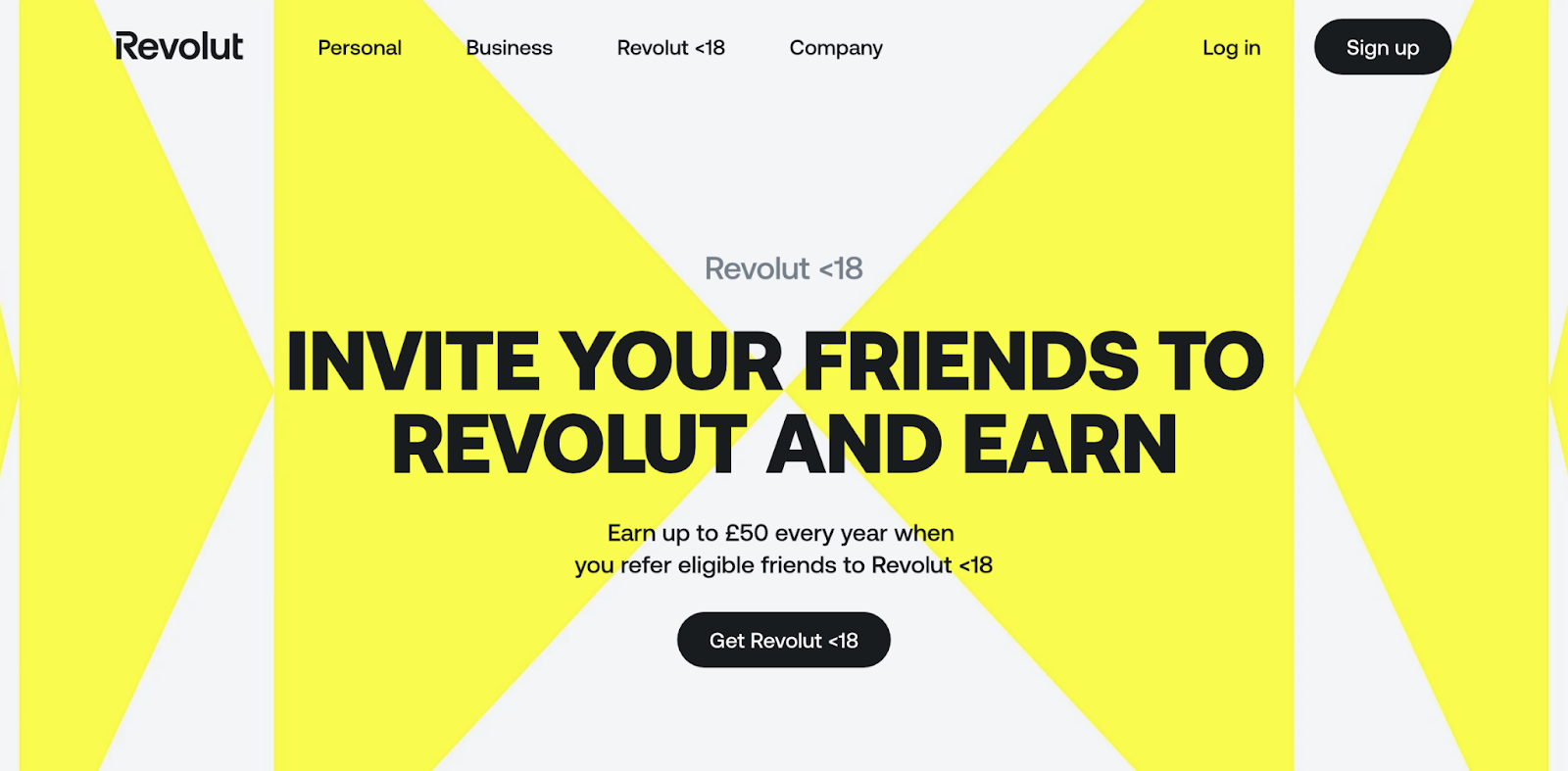
This kind of “word-of-mouth” marketing turns satisfied customers into brand ambassadors. It’s an effective way to drive growth for your brand—and can be cheaper than ads.
Customer Research
Customer research involves gathering and analyzing information about shoppers’ preferences, market trends, and competitors. So businesses can make informed decisions and craft strategies that resonate with their target audience.
To gain a deeper understanding of your customers, use Semrush’s One2Target tool.
Just enter the URL of at least one of your competitors and hit “Analyze.”
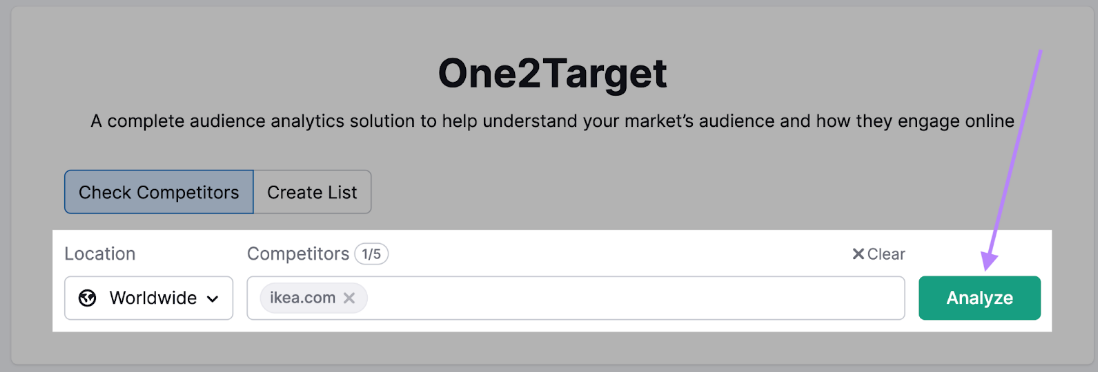
First, you’ll see how the audience is distributed across age, gender, and location:
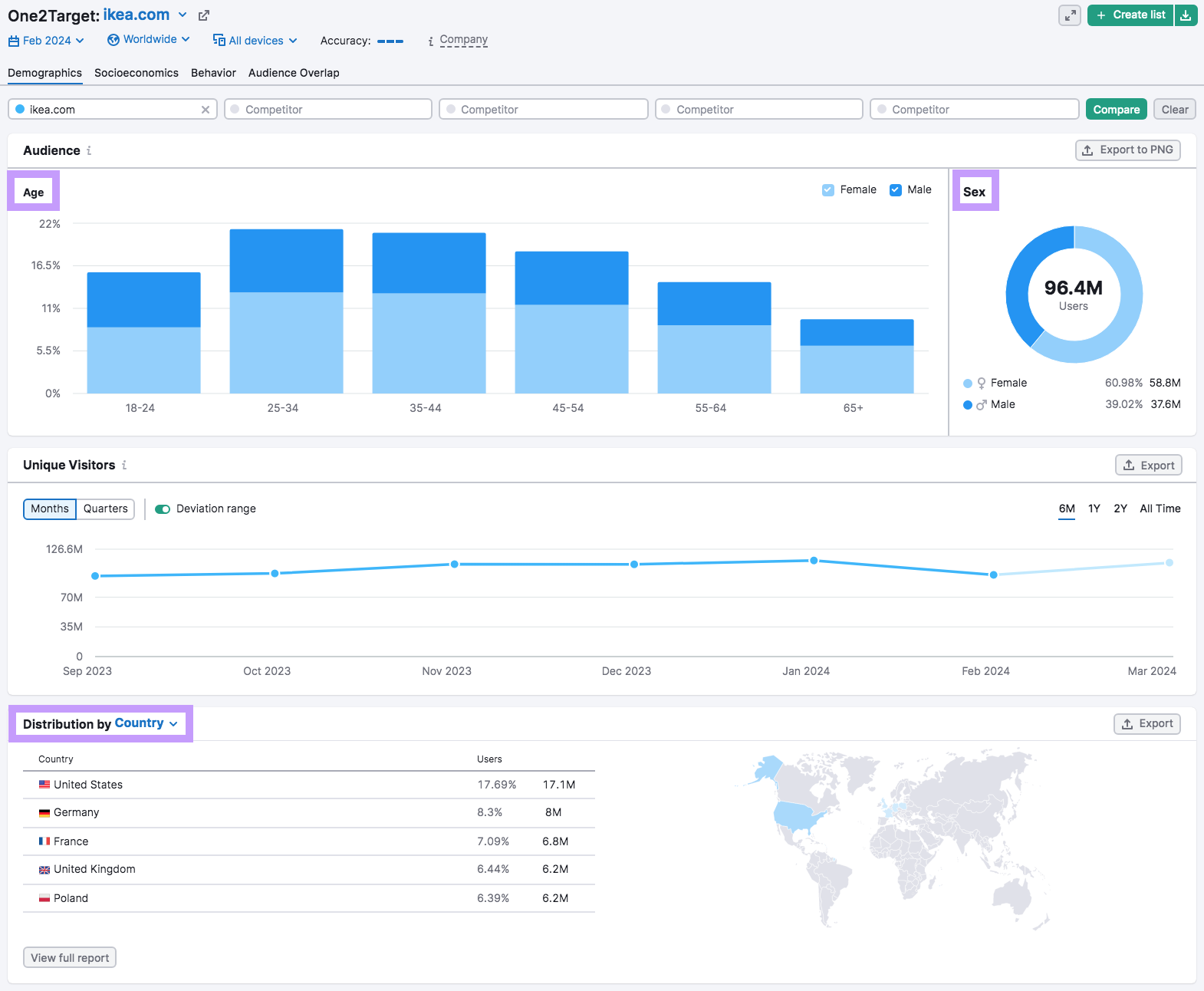
This will help you tailor your marketing and products to meet the needs of your audience.
For instance, if you notice your audience is mostly made up of younger users, you might want to adopt a more casual style to connect better with them.
Navigate to the “Socioeconomics” tab to learn about your audience’s household size and income.
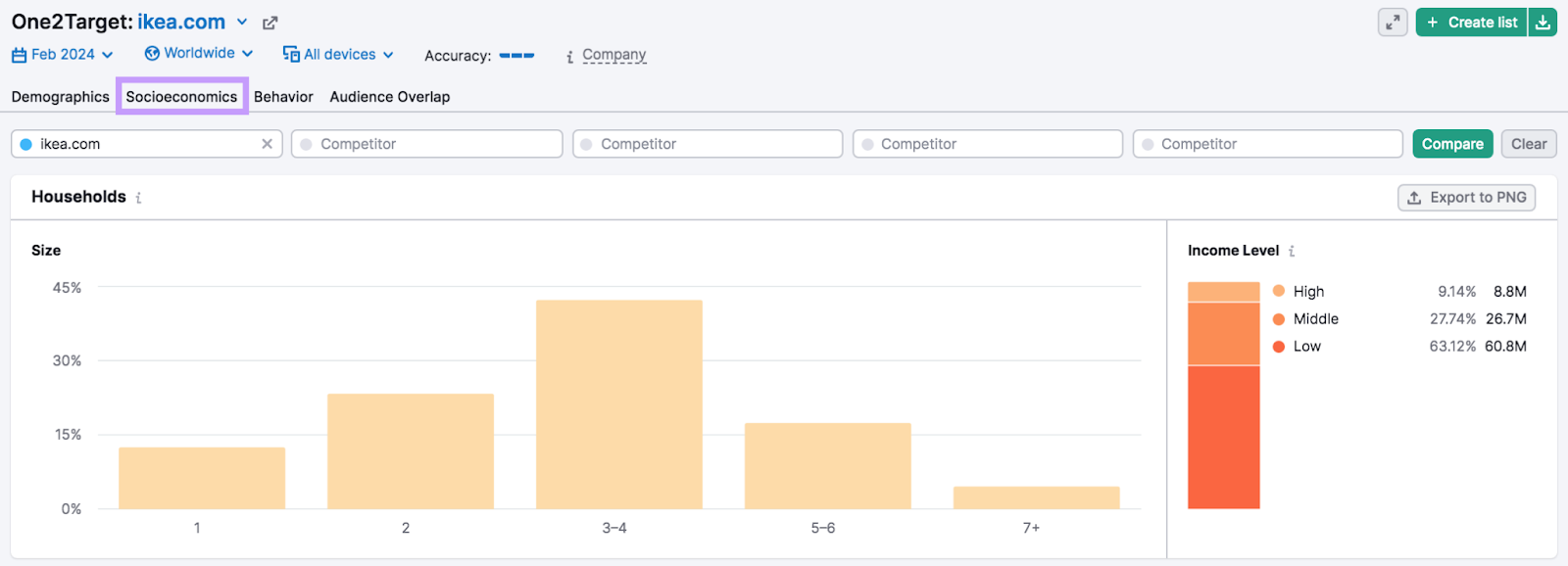
And their employment status and education level:

These insights can help you set your positioning and pricing.
For example, a lower-income audience is likely to appreciate special offers and discounts. Whereas a high-income audience might prefer top-quality, luxury items.
To find out how and where your audience engages online, open the "Behavior" tab. You can check the types of websites they visit. And whether they are on desktop or mobile.
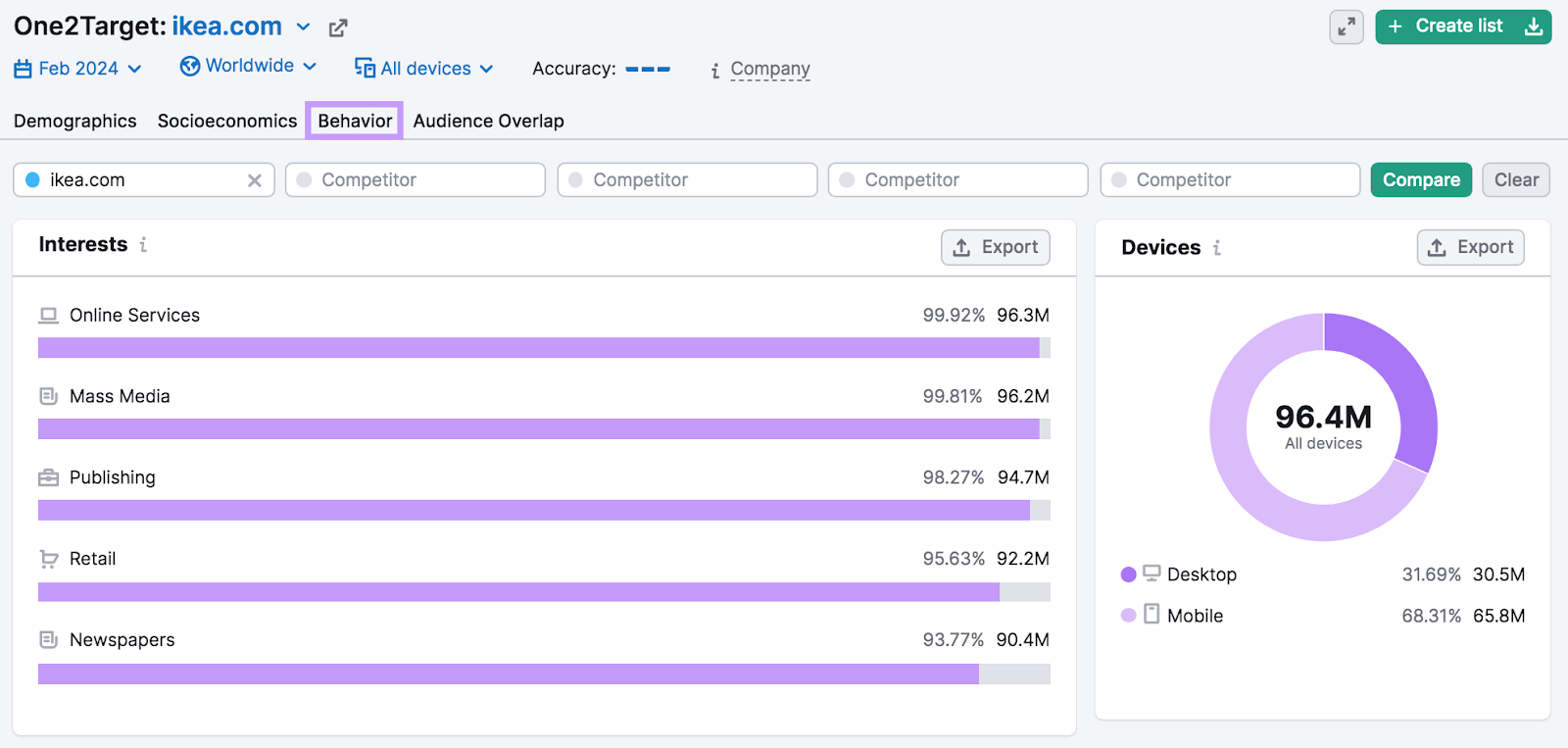
You’ll also see a breakdown of the social media channels your audience uses. So you know where is best to connect with them.

Use this information to decide which channels to focus on.
For example, if you notice your audience is mostly using YouTube, you might want to focus more on creating YouTube videos. So you invest your resources in the channels most likely to drive growth for your brand.
Market Segmentation
Market segmentation is the process of taking a broad market and breaking it down into smaller groups.
These segments can be based on specific characteristics, behaviors, or needs. This helps businesses make the right offers to the right customers with the right message.
By dividing the market into smaller segments based on specific characteristics, you can customize your marketing efforts to suit each group. Segment customers based on criteria such as:
- Geography
- Demographics
- Psychographics
- Behavior
- Media preference
- Benefit
Let’s take clothing retailer H&M as an example. Within the broader category “female shoppers,” H&M caters to various customer groups.
For instance, H&M’s premium collection is designed for upper-income customers. Students, on the other hand, may benefit from a special discount.
H&M also offers a plus-size collection. And sustainable options for those concerned about the environment.
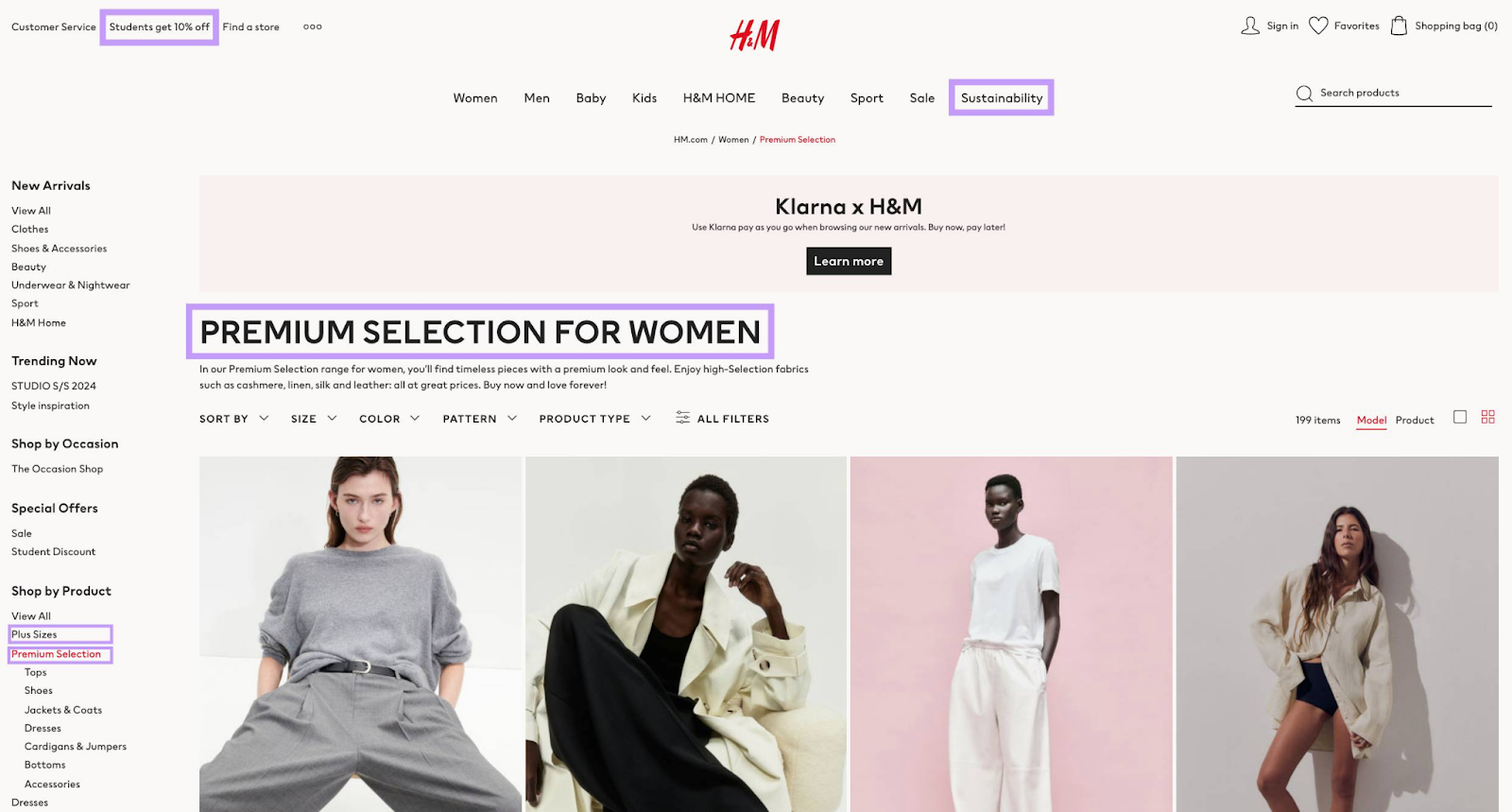
Segmentation enhances the effectiveness of your marketing, sales, and product development. It ensures that the right messages reach the right people and that your products resonate with consumers. Which helps you identify and capitalize on opportunities for growth.
Product Development and Innovation
Creating new products or significantly improving upon existing ones enables businesses to better fulfill customer needs. It’s where you use innovation to differentiate your offerings and stay relevant. And it can help you attract new customers.
For example, consumers today are often interested in sustainable products that protect the environment.
To fill this need, the personal care brand Wild developed refillable deodorant cases. Instead of buying a new deodorant each time, customers can purchase a reusable deodorant applicator and order refills wrapped in bamboo (which is biodegradable).


Identifying and responding to customer needs is an effective way to drive growth—even in a competitive industry.
Market Penetration
A market penetration strategy involves increasing your share in existing markets. It aims to grow the business by:
- Encouraging current customers to buy more
- Attracting customers from competitors
- Converting non-users into users within the same market space
By focusing on markets where you already have a presence, you can leverage your existing reputation and relationships to sell more. It allows for growth using the foundation you've already built, making it a cost-effective way to expand.
To achieve deeper market penetration, companies can employ tactics such as adjusting pricing, increasing marketing efforts, improving product attributes, or offering promotions.
For example, eyewear brand Warby Parker encourages customers to purchase a second pair of glasses at checkout by offering them a discount on each pair. They also suggest related accessories and a cleansing kit.
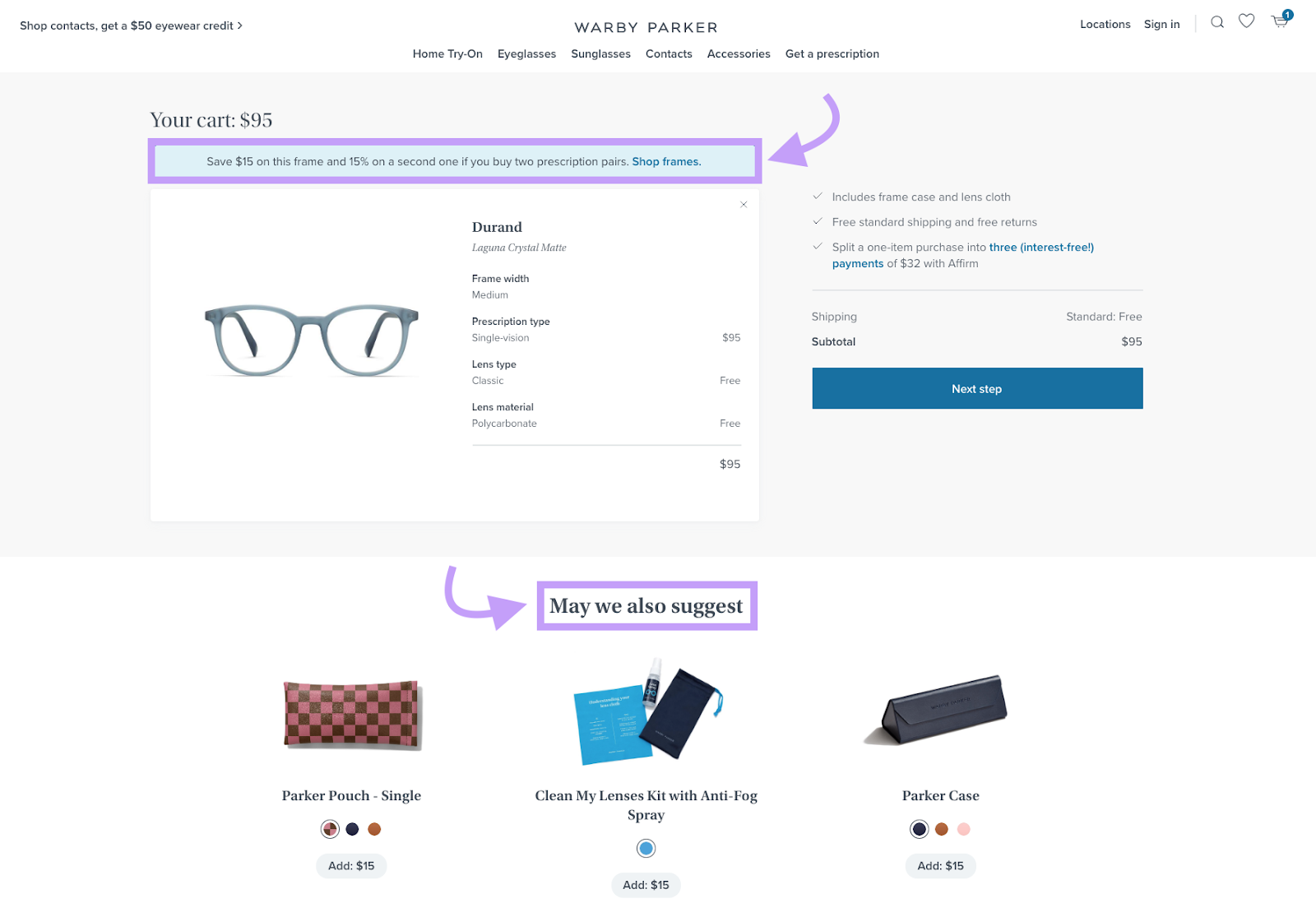
This approach helps increase the average order value. This directly contributes to higher sales revenue, supporting the brand's overall growth strategy.
Business Expansion
Expansion is a business development growth strategy. It focuses on taking your business beyond its current borders by entering new markets. Or targeting different demographics.
Tapping into new customer bases and expanding into international markets can offer significant growth opportunities. It’s often a serious investment in terms of time, money, and resources. But if it’s successful, it can take your brand to new heights.
If you want to expand into new markets or demographics, it's important to:
- Conduct thorough market research
- Understand and adapt to local consumer preferences
- Comply with regulations and standards in that country or state
- Establish strategic partnerships in the area
- Tailor marketing strategies to the local audience
- Offer customer support in the language(s) spoken
- Monitor and respond to local market trends
- Cultivate a local presence, online and offline
A good example of successful international expansion is Beyond Meat, a plant-based food company.
Originally founded in California, the brand is now present in over 80 countries. For their expansion into China, Beyond Meat introduced a version of its burgers and dumplings that catered to local tastes.

International expansion played a key role in the company’s growth story. And Beyond Meat is now valued at $634.44 million.
Diversification
Diversifying involves branching out into different industries or markets. This usually requires launching new products or services. This strategy aims to tap into new revenue streams by:
- Exploring opportunities outside the current industry
- Developing products or services that appeal to different customer segments
- Entering markets with less competition or higher growth potential
Diversifying opens up opportunities for growth by appealing to a broader customer base and capitalizing on new market trends. Diversification can also enhance a company's resilience, making it more adaptable to industry changes and consumer preferences.
A typical example is Amazon.
Amazon originally started as an online bookstore. It diversified into selling a wide range of consumer goods and electronics. A few years later, it diversified again—launching its own cloud computing service, Amazon Web Services (AWS).
Amazon is now a leader in the cloud services market with a market share of 31%. This success has contributed significantly to the company’s overall revenue.
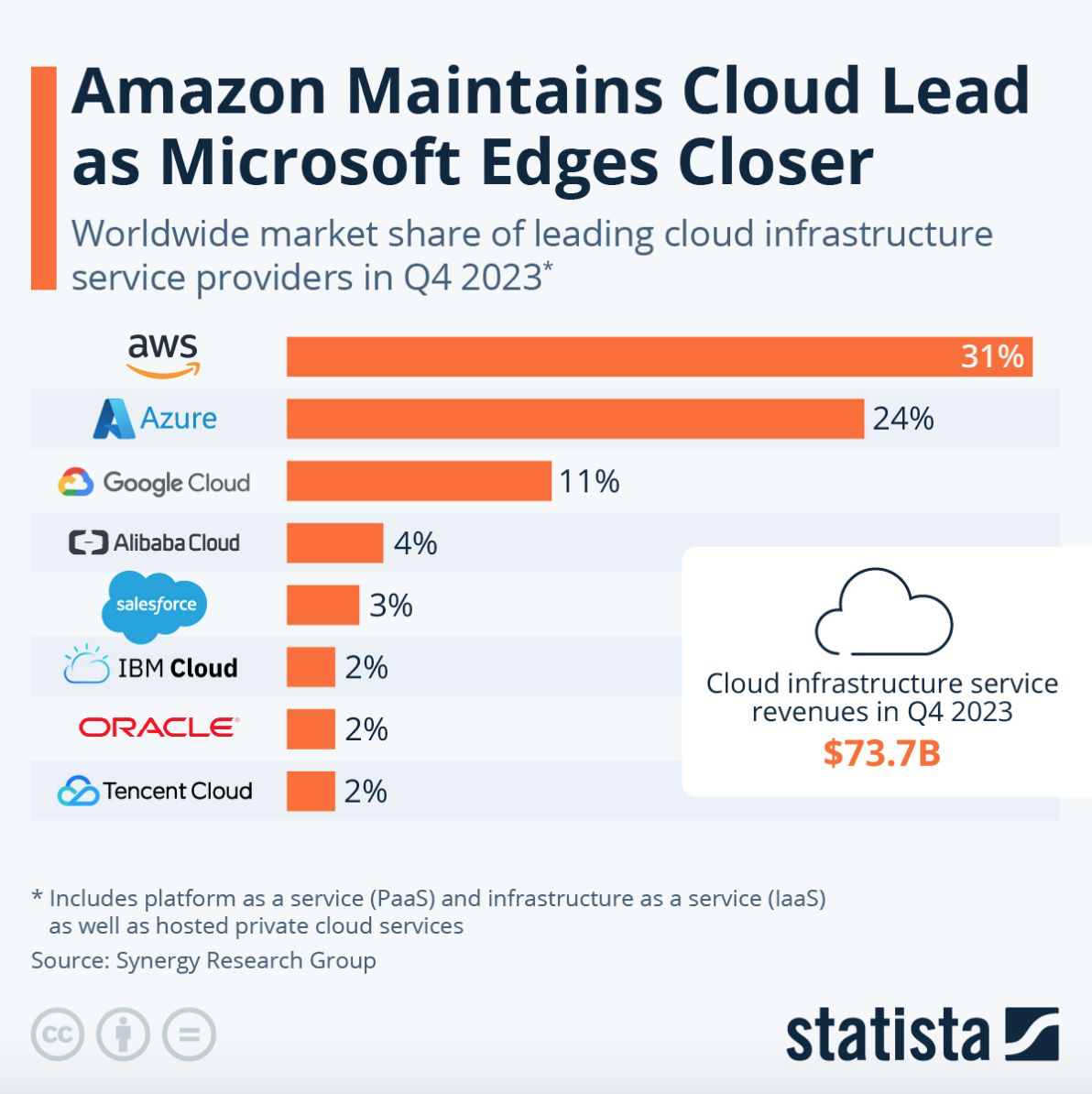
Diversifying can be a powerful strategy to drive growth and significantly boost sales. You never know—the new area of business might become even more successful than what you’re doing now.
New Sales and Distribution Channels
New sales and distribution channels, both online and offline, can significantly enhance your business's reach and revenue.
For instance, an ecommerce brand might consider opening its own brick-and-mortar stores. Or partnering with established retailers that have physical storefronts.
Similarly, a local store might consider starting an online presence to reach global customers online.
This enables you to meet different consumer preferences. Because some people value the convenience of online shopping, whereas others prefer the experience of shopping in person.
To diversify your distribution channels, you can:
- Launch pop-up stores
- Form partnerships with established retailers
- Sell via online marketplaces, such as Amazon, eBay, and Etsy
- Offer cross-promotions with non-competing businesses
- Participate in trade shows, fairs, or events
For example, Nike has an online store, an app, and over 1,000 retail stores. And they sell on Amazon. This allows Nike to reach users who prefer shopping on Amazon—possibly because they find it more convenient.
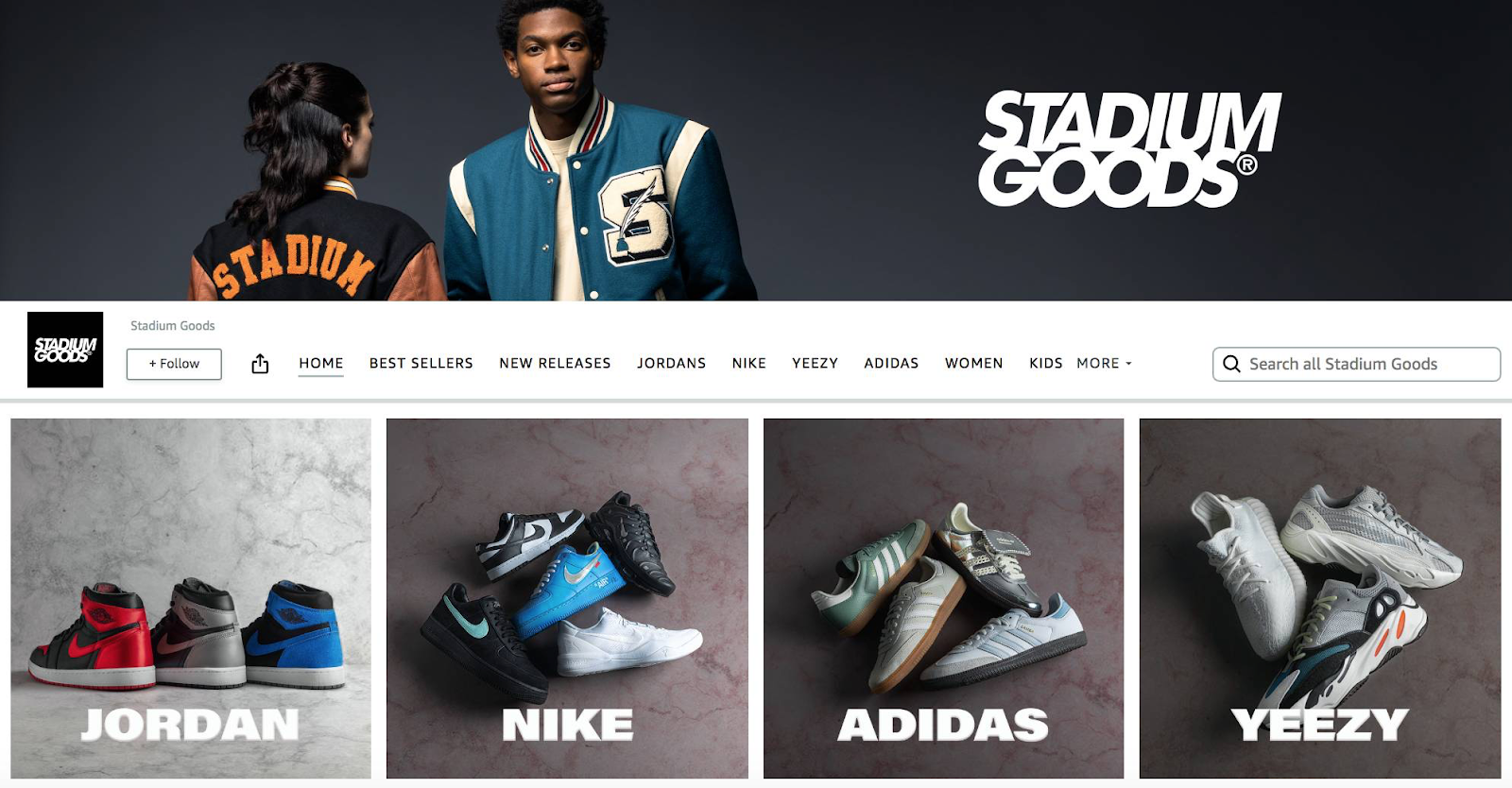
New channels can help you reach customers in ways you haven't before. So your brand can grow.
Strategic Partnerships
Teaming up with other businesses opens doors to new markets, tech, and expertise without having to invest time and resources internally. These partnerships are key drivers of growth, offering a fast track to expansion by tapping into each other's strengths.
By partnering with businesses that complement yours, you can:
- Extend your market reach with your partner’s distribution channels
- Increase awareness and trust by aligning with established names
- Reduce costs through shared innovation and production efforts
- Execute joint marketing campaigns to boost your brand’s visibility and reach
There are many examples of strategic partnerships. In fact, almost all businesses have partners. The best kind of partnerships are those where both parties bring unique strengths to the table. So both sides benefit.
For example, Disney and Epic Games (creator of the video game “Fortnite”) recently teamed up to develop a new gaming experience. They intend to bring people’s favorite Disney characters and stories to life with a new “social universe” that interoperates with the game.

Pooling your skills and resources is a great way to boost sales. You don’t have to be Disney, though.
The local gas station and the bakery next door can drive growth by teaming up. Partnerships are one of the most effective small business growth strategies.
Mergers and Acquisitions
Mergers and acquisitions are strategic business transactions in which one company purchases or combines with another company.
This allows companies to:
- Expand their business rapidly
- Gain access to new markets
- Tap into technology and expertise
- Bolster their product portfolio
It’s essentially a shortcut to growth by combining the strengths of two entities. However, mergers and acquisitions aren't always easy.
You're bringing two different cultures and ways of doing things under one roof. Plus, there's always the risk of things not going as planned financially or running into roadblocks with regulators.
However, when a merger or acquisition works out, it’s beneficial to both sides.
For example, Airbnb recently acquired GamePlanner.AI. Airbnb can now use GamePlanner’s artificial intelligence technology to improve their own platform. And GamePlanner.AI benefits from the more established company’s resources and scale.
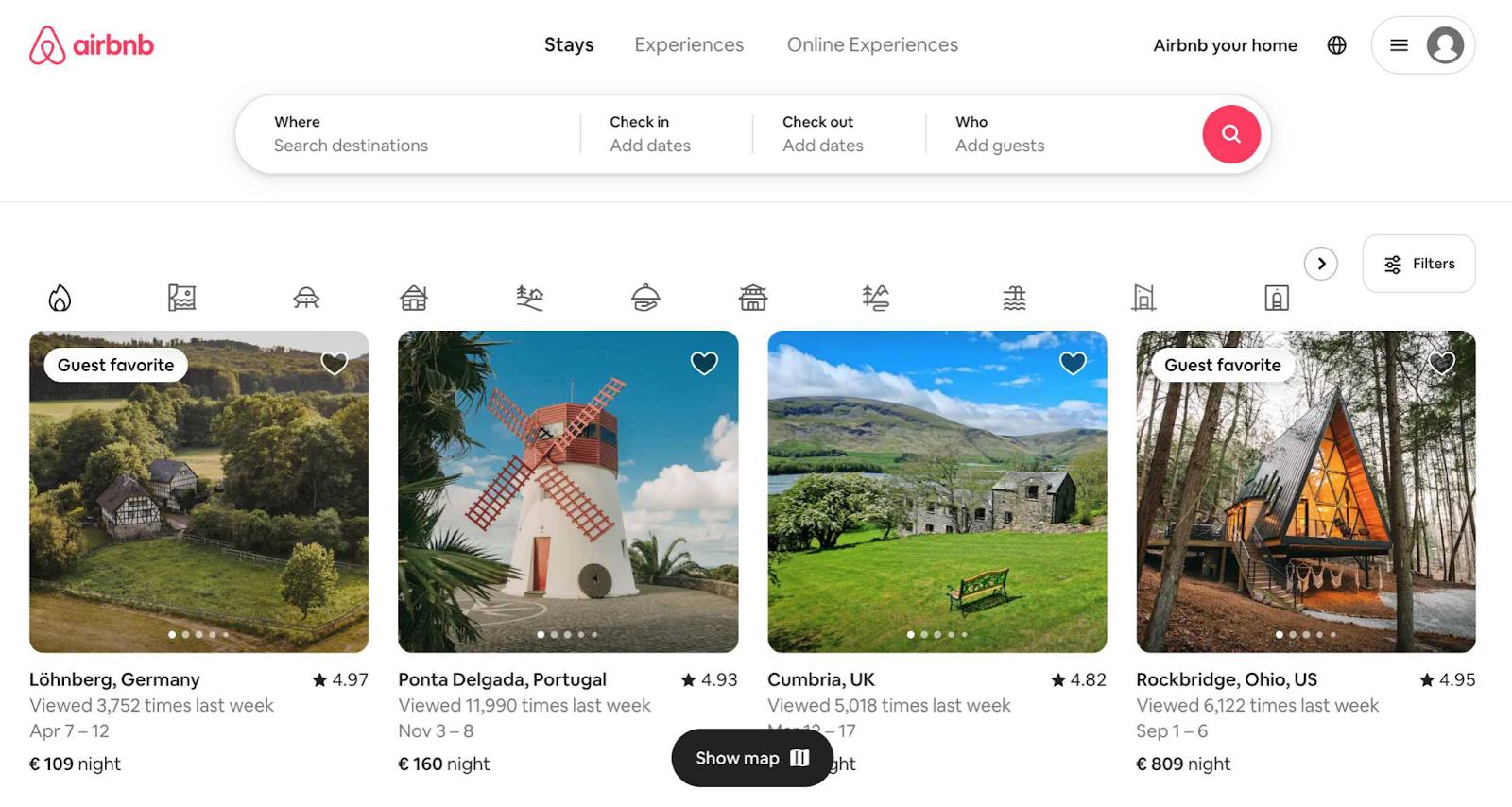
This route can offer a fast track to growth. Because you’re integrating the strengths of another business with your own.
Maximize Your Business Growth with Semrush
Growth strategies have the potential to propel your brand’s growth to new heights.
But which ones are right for your brand? That depends on your customers and what they want to see from you.
Get started with One2Target.
It’ll help you find out who your customers are, what they care about, and where they hang out online. So you can prioritize the right markets and social media channels. And ensure your positioning is on point.
Sign up for a free trial now and start analyzing your target audience.
